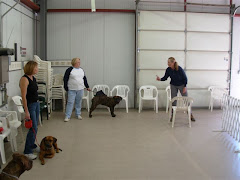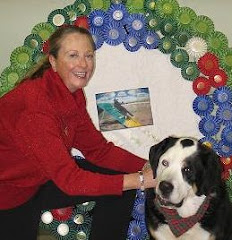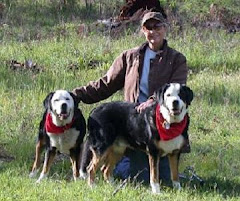You and your spouse are in the kitchen. You're cooking, and he's engrossed in the paper.
"Honey?" you say.
He might say, "Hmm?" back. And no more. His eyes won't leave the paper. He's multi-tasking, with 95% of his attention on the paper and 5% on you.....until you yell, "HELP!!"
NOW he looks up, startled, giving you 100% of his attention!
You and your dog are in your front yard. Suddenly the dog runs toward a cat in the street, and a car is speeding toward him. "Poochie!" you yell.
He might flick his ear at you. And no more. His eyes won't leave the cat. He's multi-tasking, with 95% of his attention on the cat and 5% on you...untill you yell, "Come!!"
NOW he looks up, startled, giving you 100% of his attention! He leaves the cat and comes running to you.
In both cases, you used the names ("Honey" and "Poochie") to simply get the husband/dog's attention. By saying the names, you were saying, "Hey, listen up, I'm about to tell you something very important!" In a military marching unit, this is known as a PREPARATORY COMMAND. Instead of saying "Honey," the drill sergeant says "Company" or "Platoon." The next word he says is known as the COMMAND OF EXECUTION. It tells the unit what they must do next. In the marching unit, it could be "March," "Halt," or some other maneuver.
The drill seargeant would NEVER say "Halt, Platoon!" He's working with a group of energetic bodies all moving forward. He needs to get their attention first, and then tell them what to do. Thus, it's "Platoon, Halt!"
Our dogs are exactly the same way as a platoon of soldiers. When we want them to do something, we must FIRST say their name to get their attention. THEN we give the "command of execution," whether that is "Sit," "Down," "Heel," or "Come."
This means that when we're teaching our dogs to get better about coming when called, we must first teach them to give us their attention when we say their names. Here's a fun and easy way.
Get a small bowl of wonderful kibble like Flint River Ranch or some other food that's so good your dog thinks it's a treat. Stand close to him. It doesn't matter whether he's sitting or standing in front of you or at your side. He just needs to be close...and hungry. Take out a piece of kibble, hold it between your thumb and index finger, and show it to him about 10 inches in front of his nose. Say his name. "Poochie." Move the treat to his mouth and let him take it.
Get another kibble. Hold it at the same distance (10 inches). Say his name. "Poochie." Let him reach his nose toward it, and move your hand toward him, so you meet halfway. Let him take the kibble.
Get another kibble. Hold it 10 inches from his nose. Say his name. "Poochie." Let him reach all the way toward the kibble and take it from your fingers.
Now that he's moving toward the kibble, feed him about 10 more pieces this same way.
Next, move back about six inches. The kibble you hold will now be 16 inches from his nose. Say his name. "Poochie." Let him reach--or move--the whole 16 inches to get the treat.
Your dog is quickly learning that every time you say his name, he should look at you because SOMETHING GOOD HAPPENS! Although you haven't yet given him a "command of execution," you are teaching him the "preparatory command."
If your dog is quick, sharp, and agreeable, you can go to the next step, which is to add "Come!" Now you'll do the kibble exercise saying, "Poochie, come!" You are teaching your dog to pay attention, to listen, and to respond to "Come" by moving TOWARD YOU for a reward.
Do this exercise 500 times this week. Feed your dog an entire meal of kibble this way. By next week you'll be ready for the next step, and your dog will LOVE his name!!


















No comments:
Post a Comment